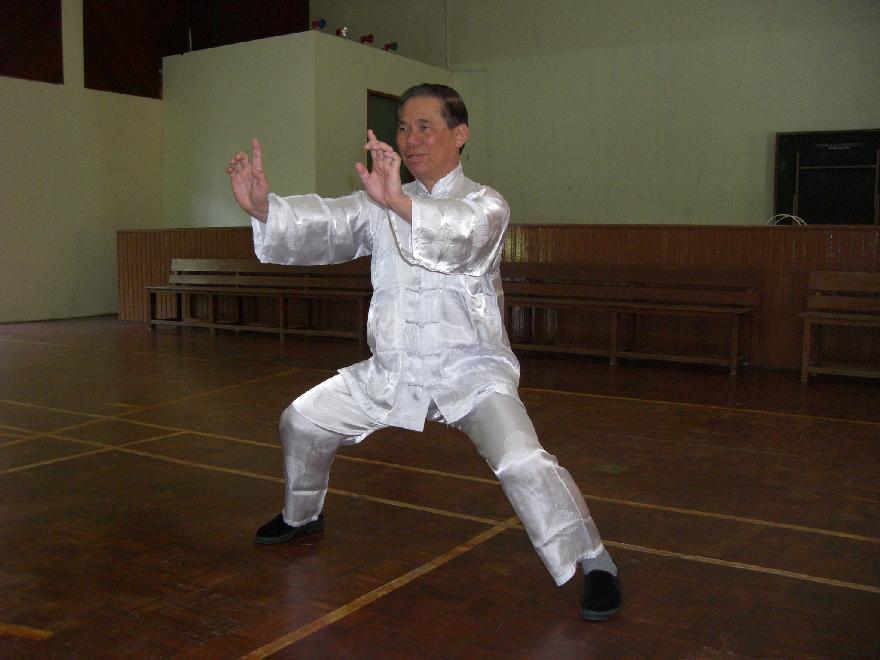YIN-YANG HARMONY IS IMPORTANT

Grandmaster Wong is solid but also agile
Question
Can you please explain why yin-yang harmony is important in chi kung and in everyday life?
-- Juliana, Austria
Answer
If one does not have yin-yang harmony, he would have a weakness of double yang, or worse he would have yin-yang disharmony. These are technical terms, and will become clear when we examine some examples in chi kung and in everyday life.
Yin and yang are widely used terms in Chinese philosophy, but not many people, including Chinese, really know what they mean.
Yin and yang are two terms symbolizing two complimentary aspects of reality. One aspect is represented as yin, and the other aspect as yang. By convention, what is feminine, gentle, unknown, negative, dark, small and substantial is represented as yin, and their counterparts, i.e. masculine, forceful, known, positive, bright, big and functional is represented as yang.
This does not mean that all feminine persons are yin, and all forceful events are yang. Yin and yang are applied only when there is comparison, and sometimes the comparison is understood, not explicitly stated.
For example, let us take two women. If the point of comparison is their size, the smaller-sized woman is yin, and the bigger-sized woman is yang. If the point of comparison is gender, then both of them are represented as yin. Here the comparison is understood, not explicitly mentioned. We compare the women with men.
In chi kung training, there are two dimensions, namely building energy and circulating energy. When we compare these two dimensions, building energy being relatively stationary is represented as yin, and circulating energy being mobile is represented as yang. If a practitioner only builds energy without circulating it, he does not have yin-yang harmony.
He commits a weakness of double yang. Why is it not called a weakness of double yin, since building energy is represented as yin? In the case of the weakness, the comparison is not between building and circulating, it is between what is known and what is not known. What is known is that building energy is good, but what is not known is that not circulating it is bad. What is known is represented as yang. Hence, it is a weakness of double yang.
There is no such a term as a weakness of double yin. If another practitioner just circulates energy without building energy, it is also called a weakness of double yang.
If the practitioner continues to build energy without circulating it, he will eventually be sick. This is represented as yin-yang disharmony. The cause of the disharmony here is excessive yin.
In daily life, being at home is represented as yin, and working outside is represented as yang. Now we have a man who is a good husband, washing dishes and looking after children at home, but he does not go out to work. He does not have yin-yang harmony.
He commits a weakness of double yang. He knows that washing dishes and looking after children for his wife is good, but he does not know that it is also important for him to go outside to work. If he does not rectify his weakness of double yang, he may eventually have financial, family or social problems, represented as yin-yang disharmony.
Some examples of yin-yang harmony in chi kung are being peaceful as well as energetic, being solid as well as being agile, physically fit as well as mentally healthy. Some examples of yin-yang harmony in everyday life are being successful in private life as well as public life, able to retreat as well as to exert, being able to enjoy leisure as well as to work hard.
LINKS
